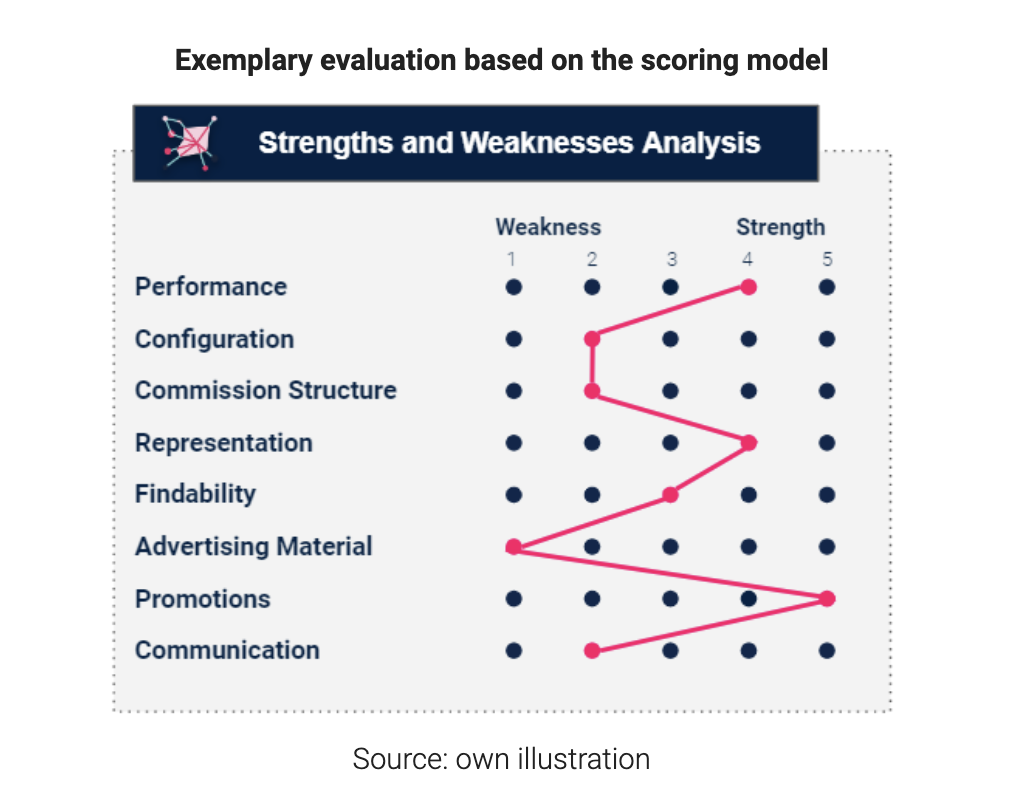The setup of an affiliate program can shortly not become the best practice anymore. Networks, advertisers and even publishers need to keep an eye on changes in technical realities such as upcoming cookie restrictions in browsers and privacy policies, while simultaneously staying open to new affiliate business models in order to grow their program.
Online marketing is characterised by its fast-paced and dynamic nature, challenging everyone to rethink their current status quo. The affiliate industry is no exception. The setup of an affiliate program can shortly not become the best practice anymore. Networks, advertisers and even publishers need to keep an eye on changes in technical realities such as upcoming cookie restrictions in browsers and privacy policies, while simultaneously staying open to new affiliate business models in order to grow their program.
It does not matter whether a publisher program has existed for years or was just launched a few months ago: regular audits by a neutral authority always challenge the current status in order to identify existing deficits and risks. As a result, the publisher program can be optimised, the performance maximised, and the profitability of the program improved through potential efficiency gains.
What is meant by the term audit and what does it mean in relation to affiliate marketing?
An audit is a systematic review of current processes and standards to determine the status quo and to find out whether the current implementation is taking place according to the program objectives and targets that have been set to identify any optimization potential. In this process, neutral experts either internal or external will examine the current status according to predefined criteria in order to assess the quality and to also derive recommendations for action. In the course of an audit in affiliate marketing, the entire publisher program is analysed down to the smallest detail and will be compared as well as evaluated against the competition and the current best practices on the market.
Identifying the revenue potential of your own affiliate program and avoiding risks
In such a program audit, different aspects should be examined in detail, including the technical setup, the commission model and the publisher base. We will now go into these in detail and show how important regular audits are for the continued and healthy growth of an affiliate program:
Technical challenges affecting the performance measurement in affiliate marketing
For several years now, the shift away from third-party tracking has also been addressed in affiliate marketing, and since Firefox announced that it would completely block third-party cookies as a standard feature, the pressure on affiliate program operators has been increasing. Surveys conducted in the course of the Affiliate Trend Report 2022 have shown that by no means all advertisers have switched to a suitable future-proof performance measurement (tracking), as described in detail in the BVDW’s Compendium on Performance Measurement in Affiliate Marketing. This suggests that not all advertisers are aware of what exactly needs to be optimised in the current tracking setup, and yet this is only one of the current challenges on the technical side. Especially when there is a lack of internal resources in this area, they will not be uncovered, let alone addressed, and are thereby a threat to the entire affiliate program. The consequence is falling numbers and dissatisfied publishers who are more likely to turn to the competition where the technical setup meets the market requirements. An in-depth audit is therefore an important approach to counteract this threat. This is because it does not only identify optimization potential, but also the necessities to maintain the program at a high quality standard in the long term.
Fair and competitive publisher compensation
Another important point is also the competitiveness of one’s commission model and attribution. The commission model is one of the most important decisions when setting up a program, as publishers also use this model to decide if they want to participate in it and how intensively an advertiser should be promoted. If a competitor’s products generate a higher profit, the publisher will also be more likely to focus on promoting the competitor which consequently could lead to a lower performance. The availability of a basket freeze or an attribution that is not based on last click is also not irrelevant for the commissioning of many publisher models, as it has a clear influence on the distribution of performance among the publisher models. For these reasons, it is important to regularly question whether one’s own commission model continues to fit with the internal goals and how well the model fits into the relevant competitive environment. An audit reveals these potential deficits and with the help of a detailed competitive analysis, it can put the setup into perspective in order to combat any tunnel vision that may have emerged on the part of the advertiser.
Achieving program goals with the right publisher models in a balanced mix
A final example is a deeper look into the current publisher base. The dynamics of the affiliate industry also arise from the constant coming and going of new publishers and publisher models as well as consolidations of existing publishers. Furthermore, due to the new technical challenges previously mentioned, publishers are trying to gain an advantage in the already very saturated publisher environment through new business models. In this dynamic, it is particularly important to deal with new market impulses frequently and also to take a look to the left and right sometimes. This is also where an audit ideally comes in, in order to check the current publisher base and to put it into relation with the corresponding comparative values: Who is missing? Who can do more? Who may even have attracted negative attention elsewhere? Does the publisher base still fit with the current strategy and objectives? Particularly in the case of programs that have grown historically, a certain degree of operational blindness is normal after a while, and an audit is used to combat this.
How new objectives can influence the existing program setup
To illustrate this, let’s look at a concrete example: An advertiser has repositioned itself internally and wants to focus more on generating new customers from now on. For this reason, the program audit is intended to examine the existing affiliate program to determine whether the existing setup is already ideally positioned to pursue this objective, or what adjustments are recommended in the various areas. Based on the criteria described, the audit could reveal the following potential:

These are only a few examples of critical conditions of a publisher program that are considered in the course of an audit. In addition, there are numerous other criteria that are analysed and assessed in depth. But even these few examples make the core objective of an audit clear: to combat any tunnel vision with fresh impulses, in order to draw ideas, potentials and recommendations for action from them.
One step ahead through objective program reflection based on a maturity assessment
The insights gained should be evaluated in the most objective way possible. For example, a scoring model can be used to put each individual criterion into perspective and thus also show the advertiser the current status on a scale. Depending on the evaluation, appropriate recommendations are automatically made, be it the optimization of the tracking setup, a new commission model, the expansion of the publisher base, or even the revision of the program details themselves to make the program even more attractive for publishers.
The Artefact approach
For this reason, Artefact has developed a scoring model based on a Maturity Assessment. During the analysis, each of the examined criterion is broken down into its individual parts, considered individually and recorded in a questionnaire. A defined scale allows an objective evaluation. In order to also understand and question the background, an interview with the program operator takes place. The interaction of both parties is crucial, because access to the programs and media plans is recommended for a complete assessment. Each criterion is given a corresponding weighting, resulting in scores for the respective areas of consideration and also across the board, in order to classify the program on the basis of the Maturity Assessment.

It is recommended not to have an audit performed by the company’s own affiliate managers, but rather to hire external auditors. They are able to audit in an unbiased manner and evaluate neutrally, as they may not yet have developed operational blindness. Nevertheless, if advertisers wish to audit internally, they can, for example, include employees who are new to the team and can thus view the publisher program from an outsider perspective.
In summary, a program audit is an extremely helpful method for advertisers to gain various insights into the quality, efficiency and timeliness of their affiliate marketing activities and to reflect on the external impact of the program. This is the only way to ensure that they do not fall behind in the dynamic market development of the affiliate industry and are ideally always one step ahead.

 BLOG
BLOG




